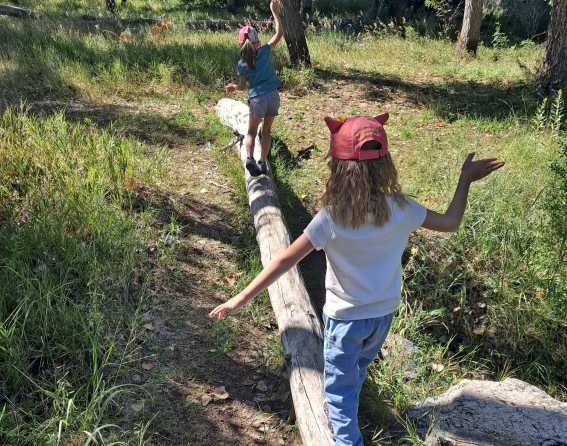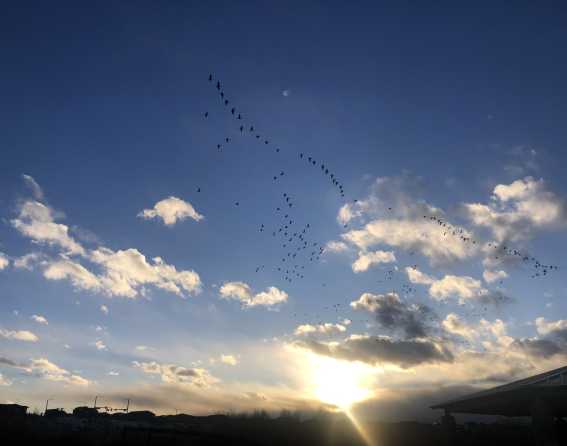Bluff Lake Nature Center is an excellent place to relax, recharge and experience nature only minutes from the city. The family-friendly wildlife refuge features walking trails, an abundance of native plants and it’s one of the best birdwatching sites along the Front Range.
It also has an important environmental story to tell.
Driving on Martin Luther King Jr. Boulevard on the eastern edge of Denver, you might not even realize that Bluff Lake is there. But once you ascend the bluff just north of the roadway, there’s a view of the lake.
“Our nonprofit owns this whole property, and it’s 123 acres,” says Rachel Hutchens, executive director of the Bluff Lake Nature Center. “That’s pretty unique for a wild space like this to not be owned by the city or the federal government.”
Bluff Lake Nature Center Highlights
- Open from sunrise to sunset every day (including holidays)
- Activities: birdwatching, walking, running, photography and picnicking
- Bikes and dogs are not allowed in order to protect wildlife
More than 230 species of birds have been seen at Bluff Lake, according to eBird. Coyotes, foxes, deer and beavers also frequent the property. Beyond wildlife watching, Bluff Lake Nature Center attracts plenty of walkers and runners.
“The loop around the lake is almost exactly one mile,” says Hutchens. “During that mile, you go into prairie habitat and wetland habitat and riparian habitat.”
It Wasn’t Always This Pristine
The lake sits on what was once Stapleton International Airport. It was replaced by Denver International Airport in 1995 at a new location to the northeast of the city.
Hutchens points at the old air traffic control tower about two miles west of Bluff Lake, which is now an aviation-themed brewpub called FlyteCo Tower. By the time Stapleton closed, the area had become a derelict urban fringe.
“There was a lot of dumping of tires and trash,” says Hutchens. “They just weren't policing and maintaining it.”
That led to the Sierra Club suing Denver’s Department of Aviation. A settlement agreement dictated that the land would be turned into a nature center. Denver subsequently invested $3 million to enhance wildlife habitat, restore the banks of Sand Creek and build a trail system. Hutchens says that has led to an island of wildlife habitat surrounded by development.
“The city feels much farther away than it actually is,” she notes. “You can see some of the houses, but you feel like you’re up in the mountains somewhere.”
Friends of Bluff Lake managed the city-owned property until 2008, when the land was transferred to the nonprofit, which handles fundraising, among other things.
A Model for Other Cities to Follow
The reclamation of the lake offers a blueprint for managing urban water systems.
The lake used to be attached to the High Line Canal, but for the last 80-plus years, it’s been fed by stormwater from surrounding neighborhoods. The water goes to little outfall ponds, which trap the trash and sediment. Then the water travels through the cattail marsh and the smaller particulates get stuck to the cattails. By the time it gets to the lake, the water is clean-filtered.
“So we’re naturally filtering 800 acres of city water. It’s a really cool way that nature and the city are working together because we need the water to be able to have a lake and that sustains all that habitat that we have. The city needs us to clean this water because otherwise it would be pumped through infrastructure,” she says.
Other cities can replicate the project by restoring big pieces of land to native habitat.
“When we got the property in ’94 it was in pretty bad shape. There were a lot of invasive species and the water quality wasn’t great. We’ve put a lot of money and time into restoration and conservation efforts.”
About 10 years ago, the center repaired the 1800s dam to make the lake hold water year-round, otherwise, it would dry up for several months at a time. Before the repair, the lake couldn’t sustain fish and a lot of the birds would leave. That’s all changed, of course, given the skyrocketing avian population.
Lots of Activities, Including a 'Forest Preschool'
Since the old airport property has been turned into mostly residential development, new construction has brought more visitors to the lake. Before the pandemic, they were seeing 40,000 visitors a year, but now it’s exceeding 90,000 post-pandemic.
More than 10,000 people participate annually in the programs at Bluff Lake, such as summer camps, monthly bird walks and “a forest preschool.” The center’s five Nature Play Stations, including a giant-sized hawk’s nest and prairie dog burrow, combine education and interactive scrambling.
Bluff Lake Nature Center continues to build on its successes. A visitor center and office building are in the works for 2025 to create a more permanent presence to interact with visitors and protect the area. Hutchens sees Bluff Lake as a gateway to understanding and appreciating the environment.
“We talk a lot about nature and cities coexisting, nature and people coexisting, and benefiting each other,” she says. “There’s a lot of really diverse neighborhoods around Bluff Lake, and a lot of people that were not going up to the mountains and have never been. This is their opportunity to see a deer, for a kid to go in the creek and catch crawdads. We really believe that young engagement with nature is what builds nature-minded people.”
Related Content
Check out these other open spaces to unwind and experience nature. Some are little-known, even by locals. Others are setting environmental standards.










